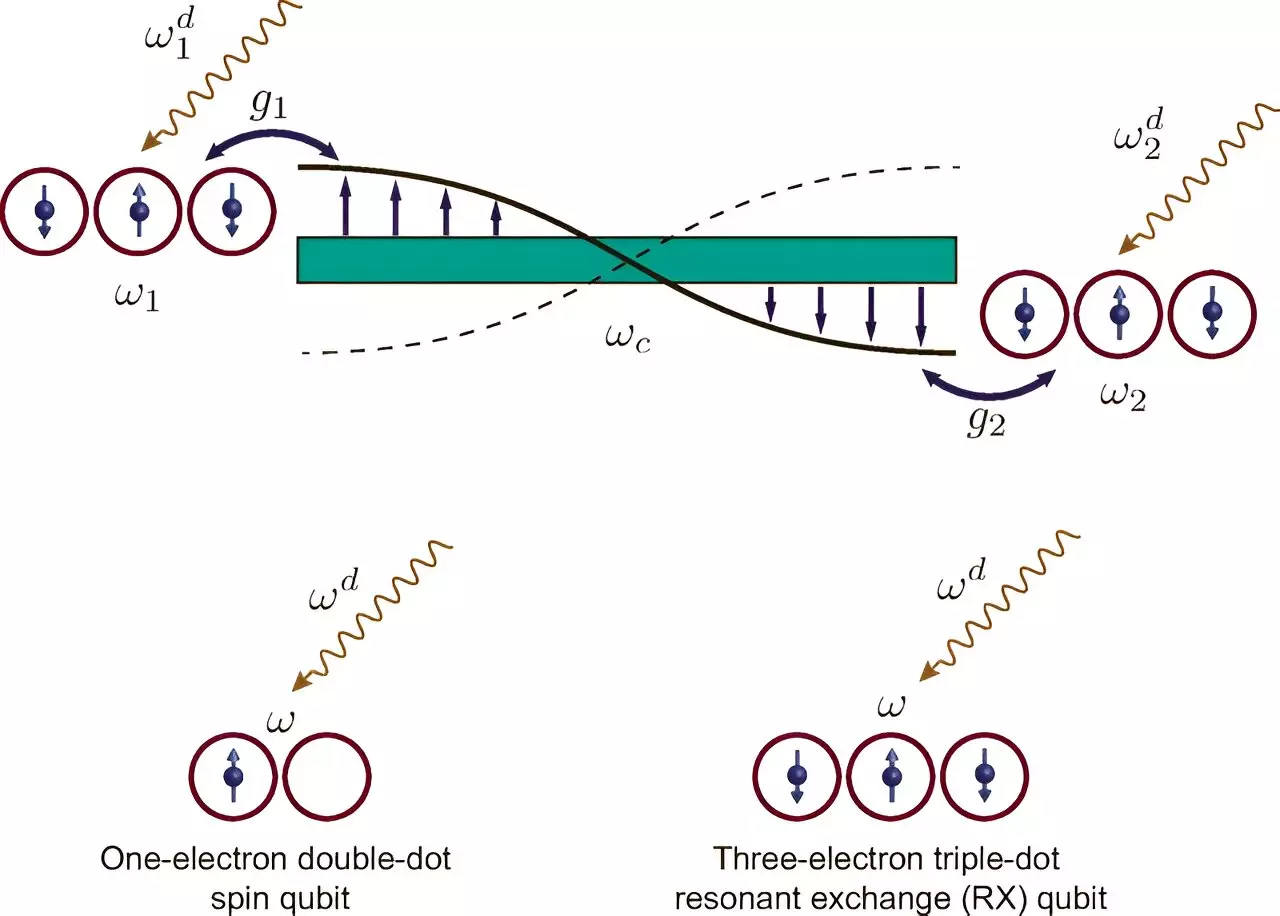Quantum computing stands on the precipice of immense potential, operating on principles that defy conventional understanding of computing. Unlike classical computers that rely solely on binary bits—zeroes and ones—quantum computers manipulate quantum bits, or qubits. These qubits can exist in multiple states simultaneously due to quantum superposition, allowing them to perform computations at speeds unimaginable with today’s classical systems. However, this incredible potential is hampered by a significant challenge: scaling quantum systems to incorporate millions of qubits. As researchers strive to create larger quantum processors, the complexity of managing increasingly intricate electronic controls poses substantial hurdles.
Challenges in Scaling Quantum Processors
The operational complexity of managing multiple qubits dramatically increases as researchers attempt to scale their quantum processors. Each qubit operates at a specific frequency, necessitating precise control to perform entangling operations—processes that increase computational power by linking qubits. This is no simple feat: coordinating the diverse frequencies while individually controlling each qubit requires sophisticated circuitry and innovative solutions. University of Rhode Island physicist Vanita Srinivasa, in collaboration with several esteemed colleagues, embarked on addressing these challenges, proposing a modular quantum computing framework that could fundamentally change how qubits are organized and linked.
Srinivasa and her research team have articulated a promising theoretical framework for creating a modular quantum processor. This approach likens itself to constructing larger systems using standardized blocks, similar to LEGO bricks. Each module would consist of several qubits, which could then be interlinked using flexible entangling operations capable of maintaining coherence across considerable distances. By employing oscillating voltages to facilitate these links, the study reveals how extra frequencies can be generated for each qubit. This method allows multiple qubits to connect while still retaining their distinct operational frequencies, addressing the control challenges that plague larger systems.
Harnessing Semiconductor Technology
The proposed modular quantum computer leverages advanced semiconductor technologies that already support the fabrication of microchips with billions of transistors. With advances in this realm, the potential of using semiconductors to create compact, efficient qubits becomes apparent. Furthermore, the integration of spin states—the intrinsic property of particles like electrons—offers enhanced protection against the loss of quantum information. However, the practical aspects of scaling up quantum processors using spin qubits and related control circuits remain daunting, prompting researchers to look for scalable solutions that fundamentally alter how qubits can be assembled and controlled.
Central to the research is the use of quantum dots—structures designed to confine particles such as electrons, thus allowing for quantum operations via precise voltage applications. The innovative aspect of this research is the integration of quantum dot-based spin qubits with superconducting cavities, which confine microwave photons. Although experimental methods have demonstrated the potential for linking qubits over long distances, previous attempts struggled with the complexities of resonance—the precise alignment of qubit and photon frequencies necessary for effective communication.
The study introduces a tunable approach that does not insist on stringent resonance conditions, a development that is pivotal for linking qubits effectively. By generating sideband frequencies, the researchers create multiple resonance conditions, thereby allowing qubits to be entangled in various configurations without drastic adjustments to the underlying components.
Prospects for the Future of Quantum Computing
The implications of this research are profound. With a structured method to link qubits, the need for all qubits to be aligned at a single operational frequency is eliminated, simplifying the integration of additional qubits into existing systems. Moreover, the flexibility offered by the different states and resonance conditions permits a diverse range of entanglement operations, effectively broadening the quantum computational capabilities. One of the most encouraging outcomes is that this modular approach is proposed to be less susceptible to photon leakage, increasing reliability and long-distance communication potential between qubits.
Realizing the Promise of Quantum Technology
While the quest for scalable modular quantum computing is still a work in progress, the research conducted by Srinivasa and her colleagues represents a significant step towards practical quantum processors. Their work outlines critical pathways for the development of innovative quantum architectures that could one day lead to devices capable of solving problems beyond the scope of conventional computing. With continued research and experimental validation, the modular approach may eventually transform the landscape of quantum computing, offering solutions that are, as of now, the stuff of science fiction. The future of computing could indeed be quantum, with vast implications for technology, cryptography, and problem-solving across diverse fields.


Leave a Reply